Here are seven orthopedic sports medicine physicians discussing the biggest challenge and opportunities for performing sports medicine cases in ambulatory surgery centers.
Edwin R. Cadet, MD, Raleigh (N.C.) Orthopaedic Clinic (Rex Healthcare): Without question, the biggest challenges and opportunities for sports medicine is meeting our advancements in the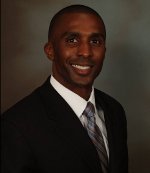 technology of implants and instrumentation with biology. Our novel surgical techniques and advancing technologies are only as good as the patient's ability to heal; especially in the area of soft tissue healing (e.g., the ability for the rotator cuff to heal following surgery).
technology of implants and instrumentation with biology. Our novel surgical techniques and advancing technologies are only as good as the patient's ability to heal; especially in the area of soft tissue healing (e.g., the ability for the rotator cuff to heal following surgery).
Biologics, in the form of delivering growth factor and stem cell treatments in more efficient ways and second, a better understanding of the mechanisms underlying soft tissue-to-bone healing will help us create an environment where injuries can heal faster, better and more consistently then what we currently see. This ultimately will help to improve patient outcomes with non-operative and operative management. This is the area that I am most excited about.
I would say "a close second" challenge for delivering the most up-to-date advances in sports medicine to our patients is the balance of containing healthcare costs with introducing new technologies that can benefit patient outcomes.
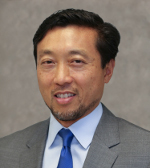 Derek T. Dee, MD, DISC Sports & Spine Center, Marina Del Rey, Calif.: Being small and specialized has its advantages and disadvantages. One of the greatest challenges ASCs face is to continue to be independent, making the best decisions for patients specifically. ASCs are in the position to provide more flexible, efficacious and yet cost-effective treatment alternatives for patients, without being constrained by what insurance companies dictate or allow in the care process.
Derek T. Dee, MD, DISC Sports & Spine Center, Marina Del Rey, Calif.: Being small and specialized has its advantages and disadvantages. One of the greatest challenges ASCs face is to continue to be independent, making the best decisions for patients specifically. ASCs are in the position to provide more flexible, efficacious and yet cost-effective treatment alternatives for patients, without being constrained by what insurance companies dictate or allow in the care process.
Scott Gillogly, MD, Atlanta Sports Medicine: I think the biggest challenge that go along with the philosophy of sports medicine is the prevention and care of injuries in athletes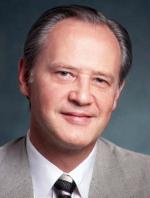 and the return to function. I think prevention is really going to be the next step on a wide-scale basis. Young female athletes are seeing ACL tears at two times the rate of males and we're looking at factors to cut that down. Prevention is a major challenge.
and the return to function. I think prevention is really going to be the next step on a wide-scale basis. Young female athletes are seeing ACL tears at two times the rate of males and we're looking at factors to cut that down. Prevention is a major challenge.
The next challenge that may end up trumping everything else is reimbursement, and whether there will be enough reimbursement to support ASCs and surgeons who have these innovative and efficient ideas. If not, the system will become more cumbersome and only support the inefficiency and high-cost patient procedures.
However, there will be opportunities at all levels to get involved in prevention, from grade school to high school and club levels. I think worldwide there is a greater appreciation of the mechanisms and physiology of injury and repair to be able to enhanced damaged and torn tissue and recover injuries closer to normal. There is far more interest in science now and that is a good thing. Although sports medicine has had superb advances, we are on the cusp of making even greater advances over the next 20 years.
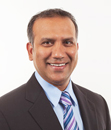 Manish Gupta, MD, Head of Sports and Orthopedic Center, Boca Raton, Fla.: The biggest challenges for sports medicine in the future is going to be the decreasing reimbursements and insurance challenges. The power of hospitals is also going to be a factor as they flex and broaden their control.
Manish Gupta, MD, Head of Sports and Orthopedic Center, Boca Raton, Fla.: The biggest challenges for sports medicine in the future is going to be the decreasing reimbursements and insurance challenges. The power of hospitals is also going to be a factor as they flex and broaden their control.
However this can also be an opportunity for hospitals to find symbiotic partnerships with ASCs and surgeons. Sports medicine will always remain very visible and thus so will the sports medicine providers. They will continue to lead the way in volume of procedures which will be attractive for both ASCs and hospitals to benefit.
When you have a reputation of efficiency and performance, the physician's practice will thrive. From a revenue standpoint, if reimbursements are decreasing, we have to see more patients. Our challenge becomes to bring more volume in. In the future, surgeons who understand that they have to provide the best product, not just be the best physician, will succeed. You can be a great physician, but if you can't tie in the business side of the equation, you'll have a difficult time.
This is a challenge and an opportunity. You can consolidate what you are spending and put yourself into the community as a talented, compassionate physician. Having your own ASC helps with efficiency and allows you to control more factors of surgery. The aesthetics of the ASC also becomes a reflection of the surgeon who provides care there, and that's important for the public. We want to figure out how to keep our value as high as possible when we are reimbursed at a lower level.
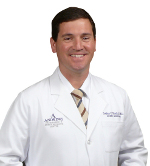 Joshua Hackel, MD, Andrews Institute for Orthopaedics & Sports Medicine, Gulf Breeze, Fla.: Innovative minimally invasive procedures resolving formerly complex problems getting reimbursed by CMS and private insurance will either advance or remove certain procedures from utilization in ASCs in the United States
Joshua Hackel, MD, Andrews Institute for Orthopaedics & Sports Medicine, Gulf Breeze, Fla.: Innovative minimally invasive procedures resolving formerly complex problems getting reimbursed by CMS and private insurance will either advance or remove certain procedures from utilization in ASCs in the United States
Selene Parekh, MD, North Carolina Orthopaedic Clinic, Durham, N.C.: One of the biggest challenges for sports medicine is the application of biologics. There is platelet-rich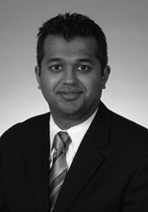 plasma treatment and stem cell treatment, but we don't really understand where they fit clinically in terms of patient care. As technology continues to be redefined and medical research studies these applications, we'll learn where to put these technologies.
plasma treatment and stem cell treatment, but we don't really understand where they fit clinically in terms of patient care. As technology continues to be redefined and medical research studies these applications, we'll learn where to put these technologies.
We will continue to push minimally invasive surgery with smaller incisions through novel technologies that allow us to perform bigger surgeries in a much more efficient setting with smaller incisions and approaches.
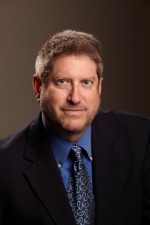 Matthew Shapiro, MD, Slocum Center for Orthopedics & Sports Medicine, Eugene, Ore.: There are so many patients who would benefit from treatment who either don't have insurance or don't have the financial resources to undergo surgery. Medicare, for example, will not fully reimburse patients for procedures performed in an ASC, limiting patients to either having their procedure in a hospital or not having their procedure at all, even though we could perform the procedure in an ASC with lower costs and higher efficiency.
Matthew Shapiro, MD, Slocum Center for Orthopedics & Sports Medicine, Eugene, Ore.: There are so many patients who would benefit from treatment who either don't have insurance or don't have the financial resources to undergo surgery. Medicare, for example, will not fully reimburse patients for procedures performed in an ASC, limiting patients to either having their procedure in a hospital or not having their procedure at all, even though we could perform the procedure in an ASC with lower costs and higher efficiency.
As surgical and anesthesia techniques continue to improve and evolve, more patients will be able to have even more complicated surgeries, including total knee replacement, total hip replacement and partial shoulder replacement, in the outpatient setting. This will improve patient satisfaction, lower costs and allow us to provide more efficient care.
More Articles on Surgery Centers:
ASC Growth in 2014: Biggest Barriers & Best Opportunities From Administrators
The Road Ahead for Freestanding ASCs: Q&A With Dr. Stacey Berner of SurgCenter Development
35 Statistics on Surgery Center Claim Denials
Edwin R. Cadet, MD, Raleigh (N.C.) Orthopaedic Clinic (Rex Healthcare): Without question, the biggest challenges and opportunities for sports medicine is meeting our advancements in the
 technology of implants and instrumentation with biology. Our novel surgical techniques and advancing technologies are only as good as the patient's ability to heal; especially in the area of soft tissue healing (e.g., the ability for the rotator cuff to heal following surgery).
technology of implants and instrumentation with biology. Our novel surgical techniques and advancing technologies are only as good as the patient's ability to heal; especially in the area of soft tissue healing (e.g., the ability for the rotator cuff to heal following surgery). Biologics, in the form of delivering growth factor and stem cell treatments in more efficient ways and second, a better understanding of the mechanisms underlying soft tissue-to-bone healing will help us create an environment where injuries can heal faster, better and more consistently then what we currently see. This ultimately will help to improve patient outcomes with non-operative and operative management. This is the area that I am most excited about.
I would say "a close second" challenge for delivering the most up-to-date advances in sports medicine to our patients is the balance of containing healthcare costs with introducing new technologies that can benefit patient outcomes.
 Derek T. Dee, MD, DISC Sports & Spine Center, Marina Del Rey, Calif.: Being small and specialized has its advantages and disadvantages. One of the greatest challenges ASCs face is to continue to be independent, making the best decisions for patients specifically. ASCs are in the position to provide more flexible, efficacious and yet cost-effective treatment alternatives for patients, without being constrained by what insurance companies dictate or allow in the care process.
Derek T. Dee, MD, DISC Sports & Spine Center, Marina Del Rey, Calif.: Being small and specialized has its advantages and disadvantages. One of the greatest challenges ASCs face is to continue to be independent, making the best decisions for patients specifically. ASCs are in the position to provide more flexible, efficacious and yet cost-effective treatment alternatives for patients, without being constrained by what insurance companies dictate or allow in the care process. Scott Gillogly, MD, Atlanta Sports Medicine: I think the biggest challenge that go along with the philosophy of sports medicine is the prevention and care of injuries in athletes
 and the return to function. I think prevention is really going to be the next step on a wide-scale basis. Young female athletes are seeing ACL tears at two times the rate of males and we're looking at factors to cut that down. Prevention is a major challenge.
and the return to function. I think prevention is really going to be the next step on a wide-scale basis. Young female athletes are seeing ACL tears at two times the rate of males and we're looking at factors to cut that down. Prevention is a major challenge.The next challenge that may end up trumping everything else is reimbursement, and whether there will be enough reimbursement to support ASCs and surgeons who have these innovative and efficient ideas. If not, the system will become more cumbersome and only support the inefficiency and high-cost patient procedures.
However, there will be opportunities at all levels to get involved in prevention, from grade school to high school and club levels. I think worldwide there is a greater appreciation of the mechanisms and physiology of injury and repair to be able to enhanced damaged and torn tissue and recover injuries closer to normal. There is far more interest in science now and that is a good thing. Although sports medicine has had superb advances, we are on the cusp of making even greater advances over the next 20 years.
 Manish Gupta, MD, Head of Sports and Orthopedic Center, Boca Raton, Fla.: The biggest challenges for sports medicine in the future is going to be the decreasing reimbursements and insurance challenges. The power of hospitals is also going to be a factor as they flex and broaden their control.
Manish Gupta, MD, Head of Sports and Orthopedic Center, Boca Raton, Fla.: The biggest challenges for sports medicine in the future is going to be the decreasing reimbursements and insurance challenges. The power of hospitals is also going to be a factor as they flex and broaden their control.However this can also be an opportunity for hospitals to find symbiotic partnerships with ASCs and surgeons. Sports medicine will always remain very visible and thus so will the sports medicine providers. They will continue to lead the way in volume of procedures which will be attractive for both ASCs and hospitals to benefit.
When you have a reputation of efficiency and performance, the physician's practice will thrive. From a revenue standpoint, if reimbursements are decreasing, we have to see more patients. Our challenge becomes to bring more volume in. In the future, surgeons who understand that they have to provide the best product, not just be the best physician, will succeed. You can be a great physician, but if you can't tie in the business side of the equation, you'll have a difficult time.
This is a challenge and an opportunity. You can consolidate what you are spending and put yourself into the community as a talented, compassionate physician. Having your own ASC helps with efficiency and allows you to control more factors of surgery. The aesthetics of the ASC also becomes a reflection of the surgeon who provides care there, and that's important for the public. We want to figure out how to keep our value as high as possible when we are reimbursed at a lower level.
 Joshua Hackel, MD, Andrews Institute for Orthopaedics & Sports Medicine, Gulf Breeze, Fla.: Innovative minimally invasive procedures resolving formerly complex problems getting reimbursed by CMS and private insurance will either advance or remove certain procedures from utilization in ASCs in the United States
Joshua Hackel, MD, Andrews Institute for Orthopaedics & Sports Medicine, Gulf Breeze, Fla.: Innovative minimally invasive procedures resolving formerly complex problems getting reimbursed by CMS and private insurance will either advance or remove certain procedures from utilization in ASCs in the United States Selene Parekh, MD, North Carolina Orthopaedic Clinic, Durham, N.C.: One of the biggest challenges for sports medicine is the application of biologics. There is platelet-rich
 plasma treatment and stem cell treatment, but we don't really understand where they fit clinically in terms of patient care. As technology continues to be redefined and medical research studies these applications, we'll learn where to put these technologies.
plasma treatment and stem cell treatment, but we don't really understand where they fit clinically in terms of patient care. As technology continues to be redefined and medical research studies these applications, we'll learn where to put these technologies.We will continue to push minimally invasive surgery with smaller incisions through novel technologies that allow us to perform bigger surgeries in a much more efficient setting with smaller incisions and approaches.
 Matthew Shapiro, MD, Slocum Center for Orthopedics & Sports Medicine, Eugene, Ore.: There are so many patients who would benefit from treatment who either don't have insurance or don't have the financial resources to undergo surgery. Medicare, for example, will not fully reimburse patients for procedures performed in an ASC, limiting patients to either having their procedure in a hospital or not having their procedure at all, even though we could perform the procedure in an ASC with lower costs and higher efficiency.
Matthew Shapiro, MD, Slocum Center for Orthopedics & Sports Medicine, Eugene, Ore.: There are so many patients who would benefit from treatment who either don't have insurance or don't have the financial resources to undergo surgery. Medicare, for example, will not fully reimburse patients for procedures performed in an ASC, limiting patients to either having their procedure in a hospital or not having their procedure at all, even though we could perform the procedure in an ASC with lower costs and higher efficiency.As surgical and anesthesia techniques continue to improve and evolve, more patients will be able to have even more complicated surgeries, including total knee replacement, total hip replacement and partial shoulder replacement, in the outpatient setting. This will improve patient satisfaction, lower costs and allow us to provide more efficient care.
More Articles on Surgery Centers:
ASC Growth in 2014: Biggest Barriers & Best Opportunities From Administrators
The Road Ahead for Freestanding ASCs: Q&A With Dr. Stacey Berner of SurgCenter Development
35 Statistics on Surgery Center Claim Denials
